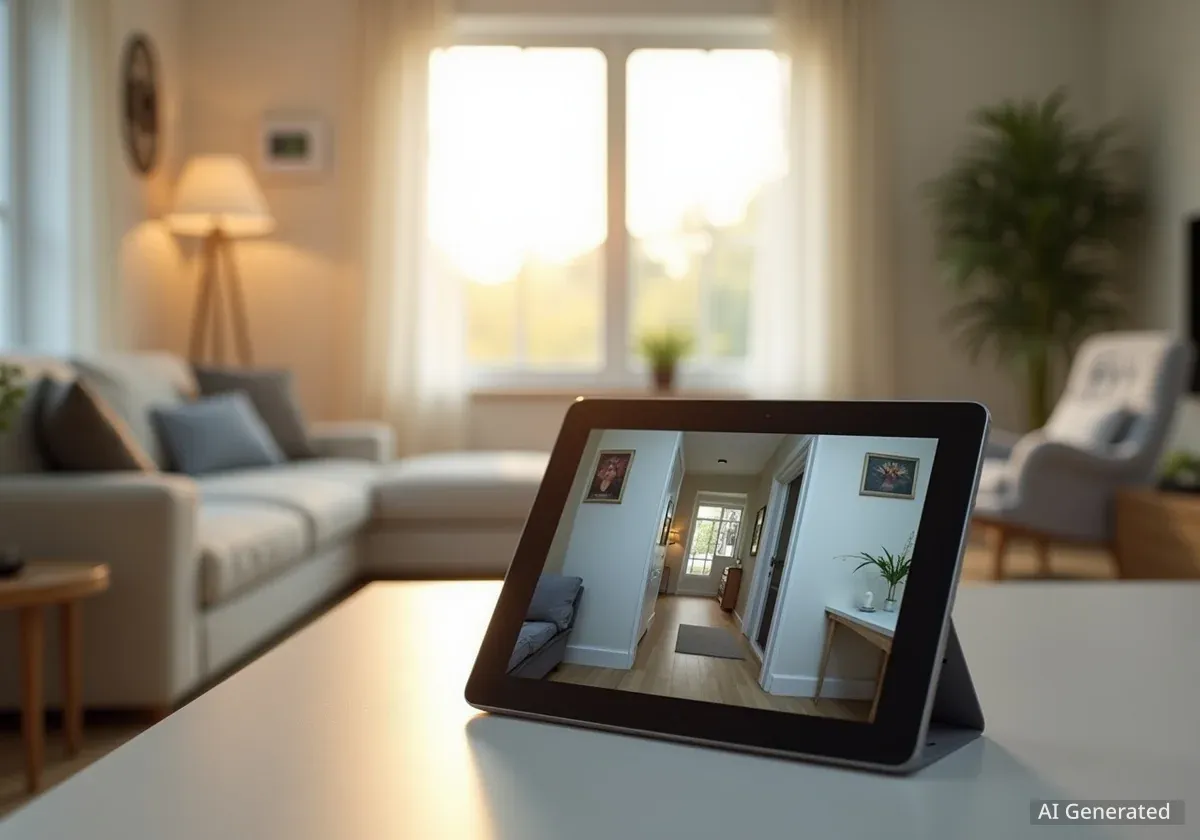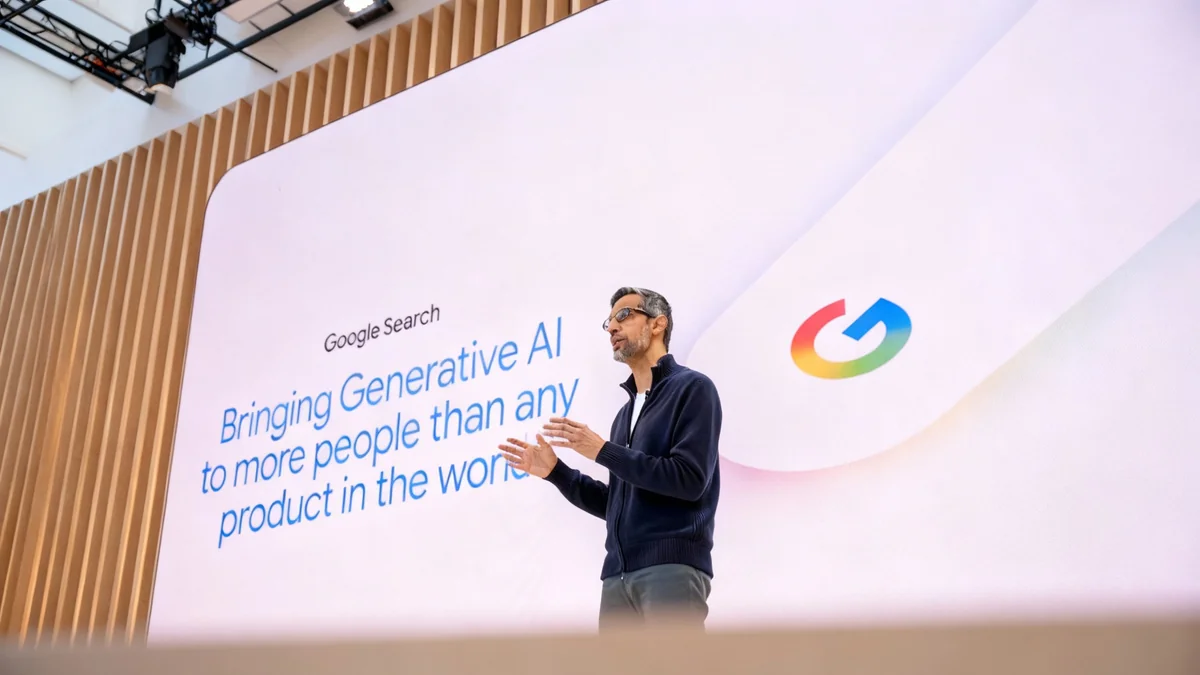Artificial intelligence has moved beyond complex data centers and chatbots to become a practical tool within the modern home. In just a few years, AI-powered features integrated into everyday smart devices are providing tangible benefits, from enhancing security to improving energy efficiency and offering greater convenience.
These intelligent systems operate quietly in the background, learning patterns and analyzing data to automate tasks and provide valuable insights. This article explores seven key applications where AI is making a significant difference in daily home life.
Key Takeaways
- AI is enhancing home security through advanced features like package detection, sound recognition for alarms, and automated video summaries.
- Smart thermostats and water management systems use AI to learn household habits, helping to conserve energy and prevent costly leaks.
- Voice assistants are becoming more conversational, allowing for natural language commands and more intuitive control of smart devices.
- Specialized AI in pet cameras can now monitor animal behavior, providing owners with detailed alerts and peace of mind.
Enhanced Home Security Through AI
One of the most developed areas for home AI is in security. Machine learning algorithms are now capable of analyzing video and audio feeds with a high degree of accuracy, providing homeowners with more specific and useful information than ever before.
1. Intelligent Package Recognition
A common feature in modern video doorbells and security cameras is package recognition. This technology uses visual analysis AI to identify when a box is delivered to your doorstep. Systems can differentiate between a person arriving, a package being left, and the package being picked up.
This provides a clear timeline of delivery events. For instance, a Google video doorbell can send distinct alerts for each stage of the process. This capability helps users know precisely when a delivery is secure and can alert them to potential theft if a package disappears unexpectedly. While some brands like Google, Eufy, and Tapo offer this feature without a subscription, others, such as Arlo, include it as part of their paid service plans.
Subscription Models
Many advanced AI features, including detailed video summaries and specific object detection, are often tied to monthly subscriptions. For example, Arlo's Secure plans, which include package detection, start at approximately $8 per month.
2. Sound Detection for Critical Events
AI is not limited to sight; it can also interpret sounds. Modern smart speakers and security systems are trained to recognize the specific frequencies and patterns of critical noises. Devices with features like Alexa Emergency Assist can listen for smoke alarm sirens, carbon monoxide detectors, or the sound of breaking glass.
When such a sound is detected, the system sends an immediate alert to the user's smartphone. This function acts as a remote set of ears, providing crucial, real-time updates about potential emergencies, whether you are at work or on vacation. Some camera systems are pushing this further; Arlo cameras, for example, can now visually recognize flames and send a specific fire alert.
AI for Energy and Resource Management
Beyond security, AI algorithms are instrumental in helping households reduce waste and save money on utilities. By learning and adapting to a home's unique rhythms, these systems can optimize the use of energy and water.
3. Presence-Sensing Thermostats
Smart thermostats have evolved from simple schedulers to intelligent energy managers. Many new models include presence-sensing technology, which uses sensors to determine when people are home or away. This data is fed into an algorithm that learns the household's daily and weekly routines.
Over time, the thermostat can build a predictive model of activity. Based on this model, it can automatically adjust the temperature to save energy when no one is home and ensure comfort when the house is occupied. Users receive suggestions for optimizing their schedules, leading to potential savings on heating and cooling bills. For those concerned with privacy, this learning feature can typically be disabled.
How Machine Learning Works in Thermostats
The AI in a smart thermostat doesn't just react to presence; it anticipates it. By analyzing data over weeks, it learns, for example, that the family usually leaves by 8:30 AM on weekdays and returns around 5:00 PM. It then begins adjusting the temperature proactively before these times to maximize efficiency without sacrificing comfort.
4. Water Usage Monitoring and Leak Detection
Similar to energy management, AI can monitor a home's water consumption to identify waste and prevent damage. Companies like Hydrific, Wint, and Watergate offer devices that attach to a home's main water line or key fixtures.
These systems use machine learning to establish a baseline for normal water usage. By analyzing flow rates and patterns, the AI can identify anomalies that may indicate a leak, such as a constantly running toilet or a dripping faucet. If a potential leak is detected, the system sends an alert, allowing the homeowner to address the issue before it leads to significant water damage or a high utility bill. The system can also provide recommendations for reducing overall water consumption.
Improving Daily Life and Convenience
AI is also making the smart home more intuitive and responsive, simplifying tasks and providing more detailed information about household activities.
5. Advanced Pet Activity Monitoring
For pet owners, AI-powered cameras offer more than just a live video feed. Modern pet tech from brands like Furbo, Petlibro, and Samsung's Vision AI uses algorithms trained to recognize specific animal behaviors. These systems can tell the difference between a pet sleeping, playing with a toy, or jumping on furniture where they are not allowed.
The AI can send detailed alerts, such as "Your dog is carrying a toy," providing more context than a simple motion alert. Some advanced systems are also being trained to recognize patterns in behavior that could indicate a pet is sick or distressed, offering an early warning to owners.
6. The Rise of Conversational AI
Voice assistants are becoming smarter and more natural to interact with. The integration of advanced large language models, like those powering Google's Gemini and new versions of Alexa, is transforming single-command interactions into fluid conversations.
"Instead of using rigid commands, users can speak more casually to their assistants, adding follow-up requests or clarifying instructions in a natural way. This makes controlling multiple smart home devices at once much simpler."
For example, a user could say, "I'm settling in for the night," and the AI could interpret this to dim the lights, lock the doors, and adjust the thermostat. Platforms like Josh AI and Home Assistant are also exploring these conversational interfaces to create a more seamless smart home experience.
7. Automated Video Event Summaries
Sifting through hours of security footage is time-consuming. The latest AI models can now analyze video clips and generate concise, descriptive text summaries of the events that occurred. This feature, offered by companies like Ring, Google Home, and Arlo, saves a significant amount of time.
Instead of watching a clip, a user can simply read a caption like, "A delivery person dropped off a package at 2:15 PM" or "A white sedan parked in the driveway for two minutes." This level of detail allows users to quickly scan their event history and identify important moments without having to manually review each video, turning raw data into actionable information.





